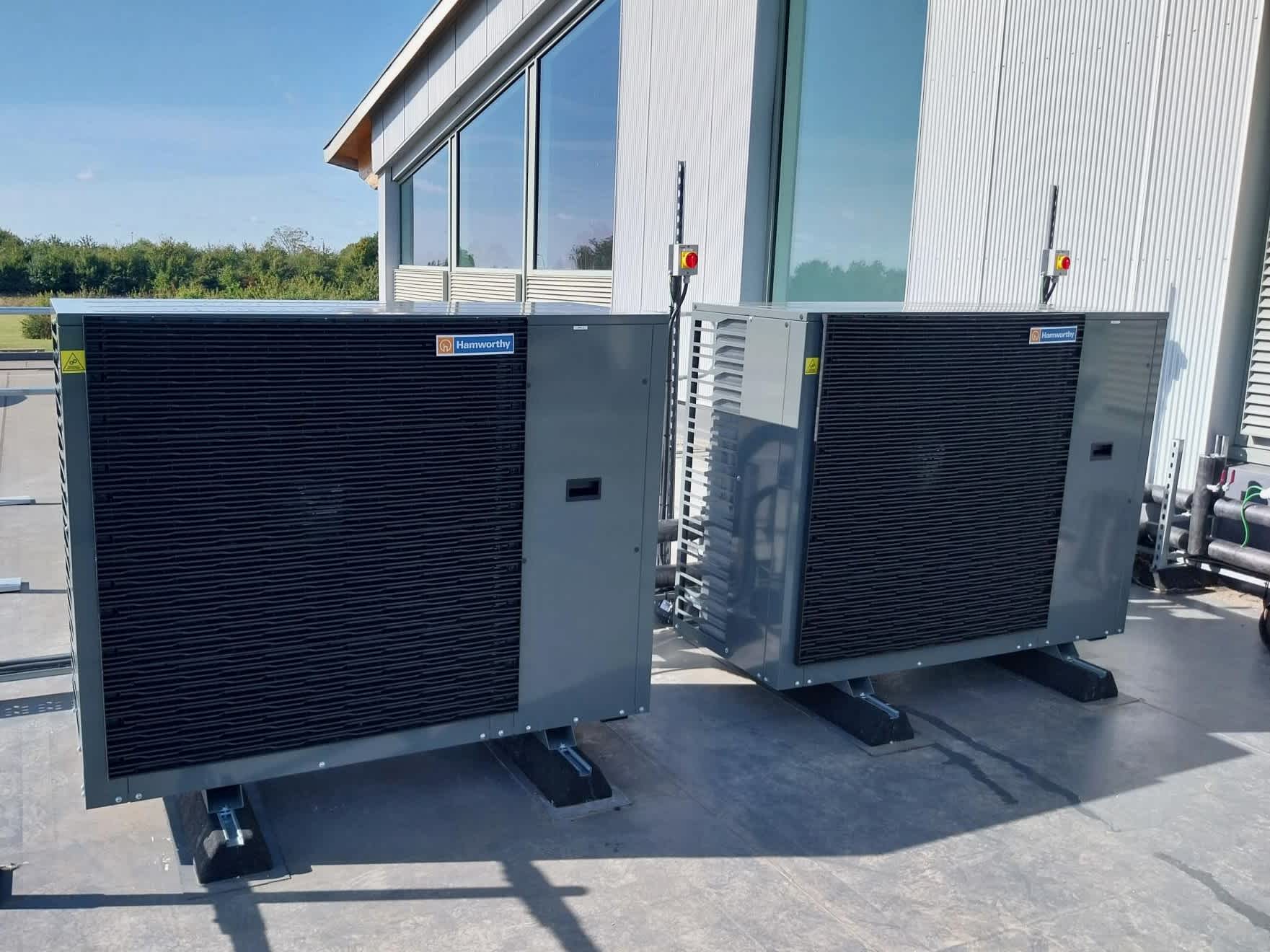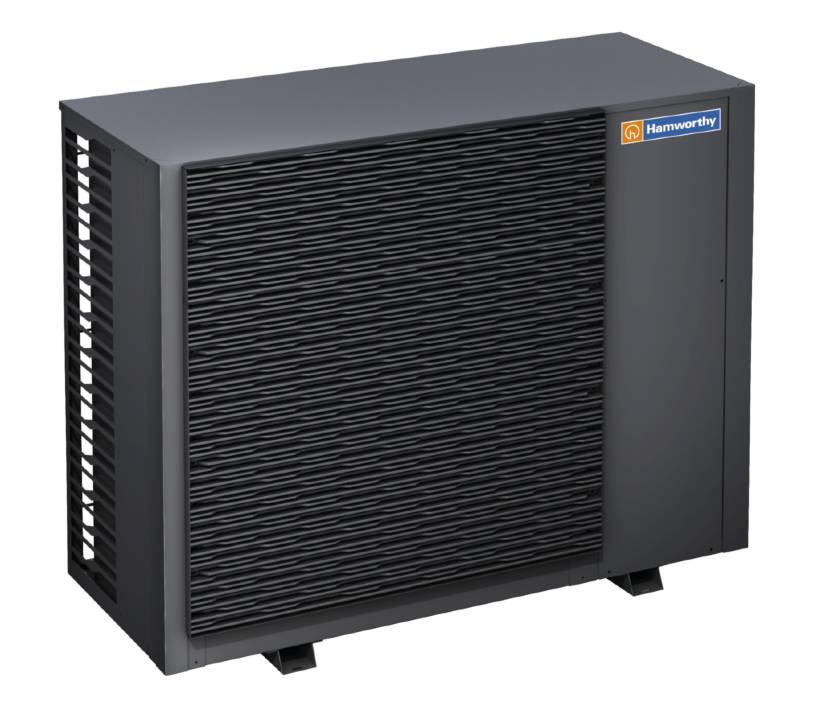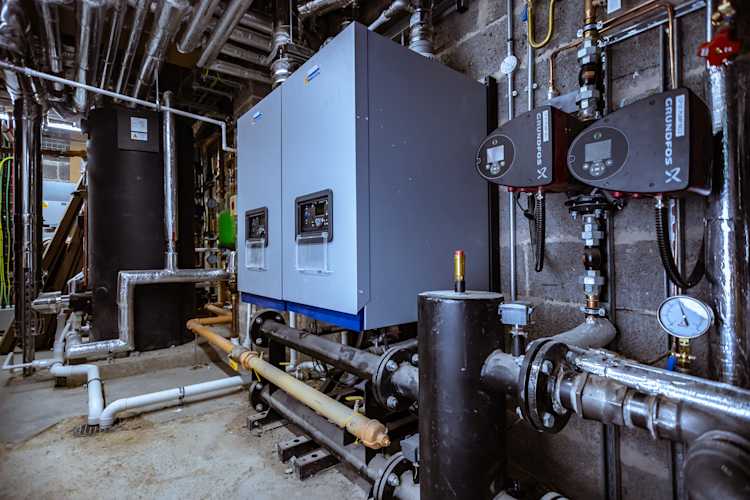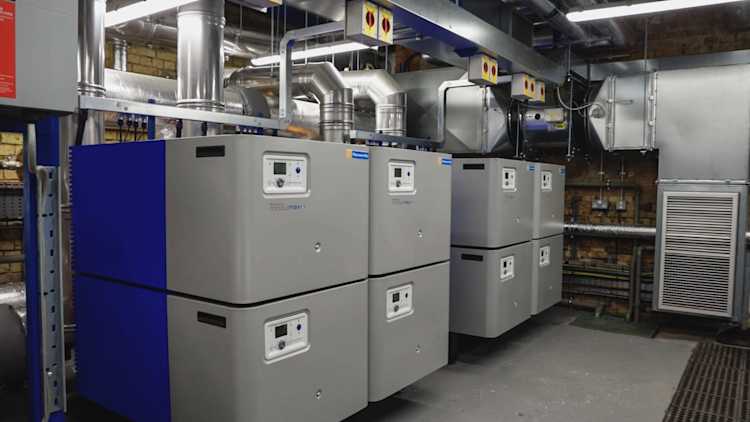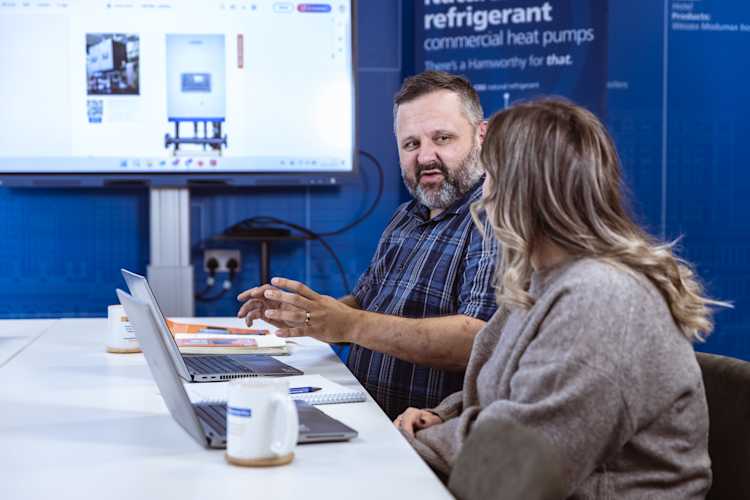How to choose the best boiler heat exchanger for commercial heating projects
We often get asked what the best boiler is to do the job - this depends on the project.
Commercial heating systems are as diverse as the buildings they are installed in. Their design is subject to many factors which need to be considered when laying out a new heating system or refurbishing an existing one.
What impact does the type of building project have on boiler choice?
Especially in the case of refurbishment projects, the existing commercial heating system design dictates what can or can’t be done. The replacement of pipework and other heating components may not be practical due to time constraints, costs and building regulations. A good example of such is our St Paul’s Cathedral case study that had to accommodate the rules of a listed building.
Boiler compatibility can be an issue, especially when the old heating system is ‘dirty’ from years of use. However, via methods such as hydraulic separation between primary (new boiler) and secondary (old pipework) circuit, this problem can be bypassed, an example is Upton House where this type of work has been carried out. New builds, on the other hand, allow more freedom when it comes to heating design, but are subject to stricter building regulations, such as Part L, e.g. in relation to carbon emissions.
Why does the metal used in a commercial boiler heat exchanger matter?
Different metals have different properties, such as weight, corrosion resistance and heat conductivity which also have an impact on the heat exchanger design, e. g. the size of the waterways. While one heat exchanger type can be suitable for one building, it might be unsuitable for another. We look at different types of heat exchangers below and explain what projects they can be used for.
Cast iron heat exchangers
Cast iron is composed of iron, carbon, silicon, and may contain traces of other elements. Traditionally dominating the market, a large number of cast iron sectional boilers are still installed in buildings across the UK.
Cast iron is a robust, heavy material and not easy to break. Originally, it was used due to its tolerance to sulphurous flue gases – a by-product of burning coal.
Cast iron heat exchangers feature a sectional heat exchanger design and benefit from large waterways. That's why they deal well with debris in circuits of older heating systems, making them a great choice for refurbishment projects.
Cast iron boilers are usually not suitable for condensing due to risk of corrosion from acidic flue gases. This means energy efficiency levels as outlined by the Energy-related Products Directive are hard to meet with these boilers. However, our ErP-compliant Purewell Variheat mk2 cast iron condensing boiler overcomes this with the addition of a second heat exchanger that enables it to condense.

Aluminium heat exchangers
Aluminium heat exchangers are lightweight with excellent heat transfer properties. Aluminium alloys which are used in them come in many different varieties.
Aluminium offers excellent heat transfer properties and is lightweight, which is why it is often used in the heat exchangers of wall hung boilers.
To prevent galvanic attack and corrosion setting in, good heating system water quality (pH band 7–8.5) must be ensured. Small waterways in aluminium heat exchangers allow a fast response to changing system requirements. However, water must be kept clean using dirt separation to allow flow through the narrower waterways.
It is often a preferred choice due to its lower cost and high efficiency, especially for new build projects where good water quality can be maintained. Our Upton floor standing condensing boiler features a precision-engineered heat exchanger with fin and pin design to optimise heat distribution and efficiency. Compared to traditional aluminium boilers, it features a single flow path resulting in high flow velocity, helping to reduce scale build-up.

Stainless steel heat exchangers
Stainless steel is an alloy based on iron combined with chromium (min. of 10.5%) to make it corrosion resistant and lower carbon content compared to cast iron.
Many different types of stainless steel with other added elements to improve weldability and formability exist. Grade 316 is the most common type, with good welding and heat transfer properties, similar to those of cast iron.
Compared to aluminium, stainless steel is tolerant towards a wider pH band (7-9.5), making it suitable for more challenging water conditions.
Wetter environments such as swimming pools can especially benefit from these properties.
Given its durability and longevity, warranty terms are often favourable (5-10 years). We give a 10-year warranty on our Wessex ModuMax mk3 boiler stainless steel heat exchanger.

Steel shell or shell and tube
Steel shell or shell and tube steel heat exchangers are used in higher output, often pressure jet boilers.
Benefits are lower cost and a wide differential temperature (back in the day only achievable from such boilers). As they corrode readily, they are not suitable for condensing, unless a secondary heat exchanger is used, as in our Melbury C boiler.
A minimum return temperature control in these kinds of commercial boilers is also necessary to prevent condensing. Pressure jet burners are based on a single piece boiler design and take up a lot of space, which is why access and installation need to be considered. Boilers of this kind are unsuitable for tight plant rooms, or refurbishments with limited access to the plant room.
Huge heat loads can call for steel shell boilers, but other boilers might be arrangeable as cascade/modular installation to cover heat demand. An advantage of the latter is the ability to load match and modulate the boiler down to supply only heat that is required, rather than always running at full load. This way, more boilers are running, but all of them at a more efficient part load, saving fuel/gas.
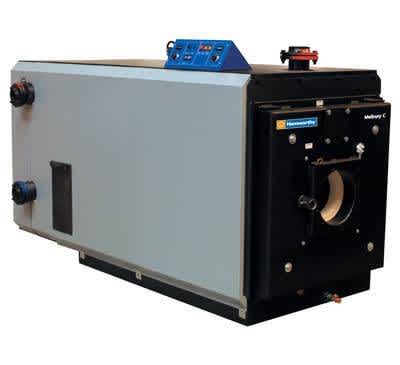
In conclusion
While each material has its benefits and disadvantages, a certain type of boiler’s suitability for a project depends on other factors, too.
Is it a new building or the refurbishment of an existing heating system?
What type of building is it; town hall, hotel, school, church?
What’s the heat load?
What are the environmental objectives? It’s crucial to look at nitrogen oxide emissions (particularly in city centre locations) and efficiency levels for compliance and green assessments.
How will the equipment be looked after? What is the planned maintenance regime, what are the warranty terms? Is there a way to control water quality?
Lastly, the cost factor is driving many decisions. Stainless steel offers long-term peace of mind while cast iron and aluminium offer a more economical option in the short term.
Still unsure about boiler choice? Get in touch with your local Area Sales Manager.
